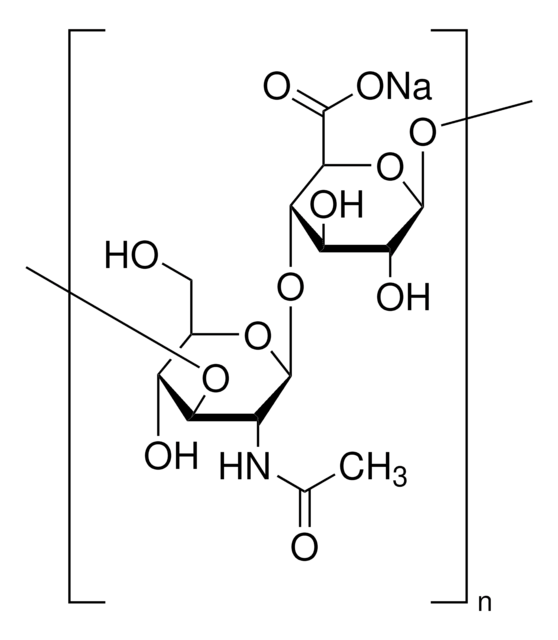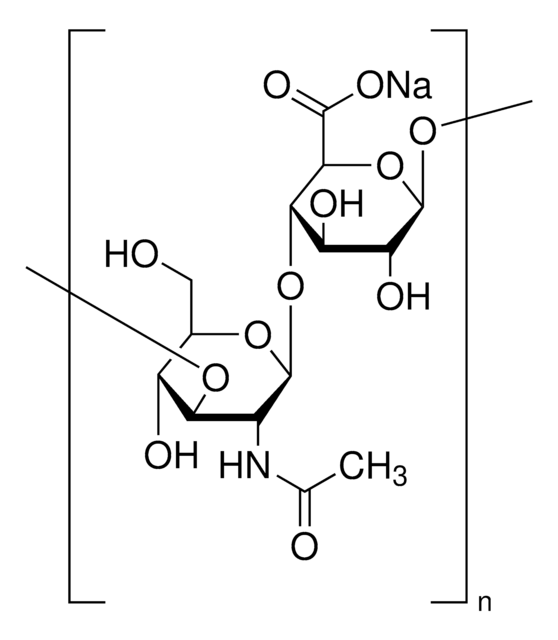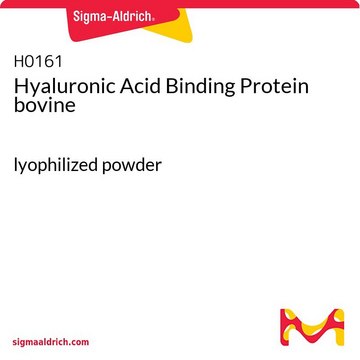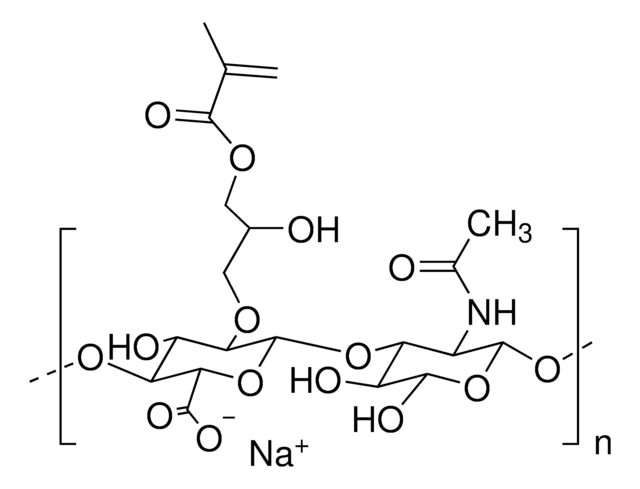924474
Hyaluronic Acid
Low Viscosity, Low endotoxin
Synonyme(s) :
3D bioprinting, HA, Hyaluronan
About This Item
Produits recommandés
Niveau de qualité
Forme
(powder or chunk(s) or fibers)
Impuretés
<10 CFU/g Bioburden
<100 EU/g Endotoxin
Couleur
white to off-white
Adéquation
conforms to structure for NMR
Température de stockage
2-8°C
Description générale
Application
- Cell migration
- Angiogenesis
- Viability
- Proliferation
Our low endotoxin HA is tested for both endotoxin (< 100 EU/g) and bioburden (< 10 CFU/g) levels, so you can choose which material is right for your research.
Code de la classe de stockage
11 - Combustible Solids
Classe de danger pour l'eau (WGK)
WGK 3
Point d'éclair (°F)
Not applicable
Point d'éclair (°C)
Not applicable
Faites votre choix parmi les versions les plus récentes :
Certificats d'analyse (COA)
Désolés, nous n'avons pas de COA pour ce produit disponible en ligne pour le moment.
Si vous avez besoin d'assistance, veuillez contacter Service Clients
Déjà en possession de ce produit ?
Retrouvez la documentation relative aux produits que vous avez récemment achetés dans la Bibliothèque de documents.
Notre équipe de scientifiques dispose d'une expérience dans tous les secteurs de la recherche, notamment en sciences de la vie, science des matériaux, synthèse chimique, chromatographie, analyse et dans de nombreux autres domaines..
Contacter notre Service technique





